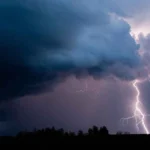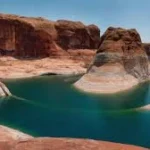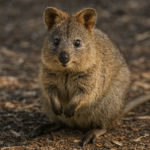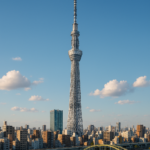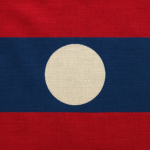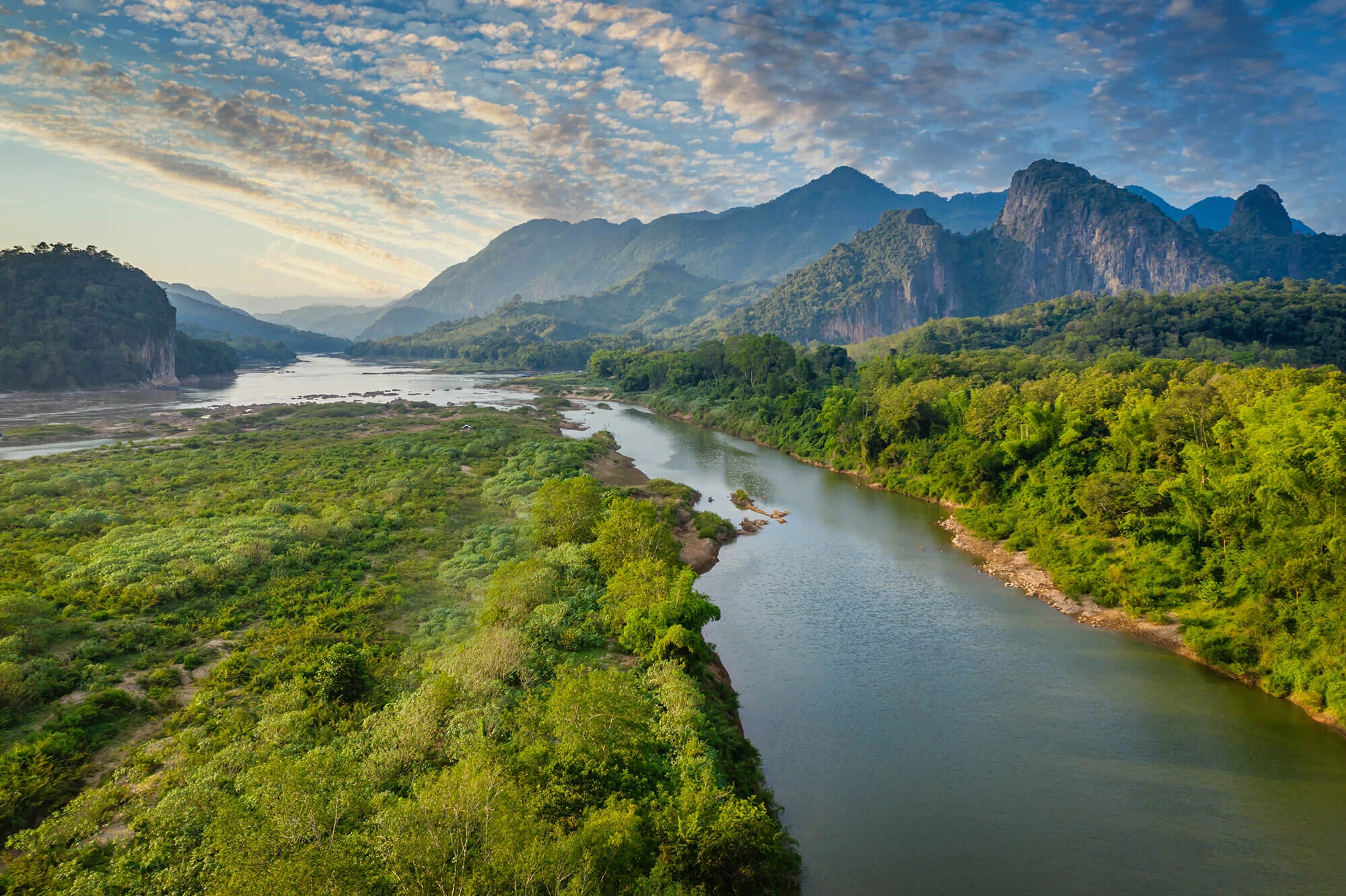
The Mekong River, one of the longest rivers in the world, flows through six countries in Southeast Asia, weaving a rich tapestry of culture, history, and biodiversity. With its origins in the Tibetan Plateau and its journey through stunning landscapes, bustling cities, and tranquil rural communities, the Mekong is not just a vital waterway but also a lifeline for millions of people who depend on it for their livelihoods. From its role as a historic trade route to its significance in local agricultural practices, the river is steeped in fascinating stories and remarkable facts. In this blog, we will explore 25 intriguing facts about the Mekong River, uncovering its ecological importance, cultural significance, and the challenges it faces in the modern world. Join us on this journey to discover the wonders of the Mekong and the vital role it plays in shaping the lives of those who call its banks home.
Length: The Mekong River stretches approximately 4,350 kilometers (2,703 miles), making it the 12th longest river in the world. Its extensive length allows it to traverse diverse landscapes, from the mountainous regions of Tibet through the lush jungles of Southeast Asia to the vast Mekong Delta in Vietnam. This extensive journey influences the river’s flow patterns, sediment transport, and biodiversity, as it passes through various climatic zones and ecosystems.
Countries: The Mekong River flows through six countries: China, Myanmar, Laos, Thailand, Cambodia, and Vietnam. Each country contributes to the river’s cultural and ecological diversity. In China, it is known as the Lancang River, where it begins its journey, while in Vietnam, it becomes a vital resource for agriculture and fishing. The river serves as a natural border in some areas, facilitating trade and cultural exchange among the nations it traverses.
Source: The river originates from the Tibetan Plateau in China, at an elevation of about 5,000 meters (16,404 feet). The source is located near the sacred mountain of Mount Kailash, which holds significant spiritual importance in several religions. As the river flows down from its high-altitude source, it gathers water from numerous tributaries, shaping its course and contributing to its volume as it descends into the lower altitudes of Southeast Asia.
Delta: The Mekong Delta in Vietnam is one of the largest and most fertile deltas in the world, covering an area of approximately 39,000 square kilometers (15,100 square miles). It is characterized by a network of rivers, swamps, and islands, providing a unique habitat for diverse wildlife. The delta is crucial for rice production, contributing to Vietnam’s status as one of the largest rice exporters globally. The intricate waterways facilitate transportation and trade, while the rich soil supports a variety of crops, making it a vital agricultural hub.
Biodiversity: The Mekong River basin is renowned for its remarkable biodiversity, housing over 1,200 species of fish, many of which are endemic to the region. This rich aquatic life includes species such as the Mekong giant catfish, which can grow up to 3 meters (9.8 feet) long, and the critically endangered Irrawaddy dolphin. The river’s diverse habitats, ranging from fast-flowing sections to slow-moving waters, create ideal conditions for various fish species, making it one of the most productive freshwater ecosystems in the world.
Endangered Species: Among the notable endangered species in the Mekong River is the Irrawaddy dolphin, which is known for its unique rounded forehead and lack of beak. The population of these dolphins in the Mekong is critically low, with fewer than 100 individuals remaining, primarily concentrated in the stretches of the river in Cambodia. Conservation efforts are underway to protect this species and its habitat, highlighting the urgent need for sustainable practices to ensure the survival of these iconic creatures.
Hydropower: The Mekong River has significant hydropower potential, with numerous dams constructed along its course, particularly in Laos and China. These dams generate electricity for regional development but also raise concerns about their environmental impact, including alterations to river flow, sediment transport, and fish migration patterns. The construction of dams has sparked debates among the countries sharing the river, balancing the need for energy with ecological sustainability and the livelihoods of local communities reliant on the river’s natural resources.
Fisheries: The Mekong River supports one of the largest inland fisheries globally, providing a critical source of protein for millions of people living in the basin. It is estimated that around 60 million people rely on the river’s fisheries for their livelihoods. The rich biodiversity of fish species, combined with the river’s seasonal flooding, creates ideal conditions for fishing. However, overfishing, pollution, and habitat destruction pose significant threats to this vital resource, necessitating sustainable management practices to protect the fish populations and the communities that depend on them.
Rice Production: The Mekong Delta is often referred to as the “Rice Bowl” of Vietnam, contributing significantly to the country’s rice production, with around 50% of Vietnam’s total rice output originating from this region. The fertile alluvial soil, combined with the river’s seasonal flooding, creates optimal conditions for rice cultivation. Farmers in the delta practice both traditional and modern agricultural techniques, with rice paddies interspersed with fish farms, showcasing an integrated approach to land and water use that enhances food security for the local population.
Cultural Significance: The Mekong River holds immense cultural significance for the communities living along its banks. It is not only a source of livelihood but also a central part of their cultural identity and traditions. The river features prominently in local myths, folklore, and religious practices, often seen as a life-giving force that sustains the people and their way of life. Festivals and rituals are celebrated along the river, reflecting the deep connection between the communities and the waterway. For example, the annual boat racing festivals showcase traditional wooden boats and celebrate the river’s importance in transportation and trade. The Mekong also serves as a vital artery for commerce and communication, linking villages and towns, and facilitating the exchange of goods and cultural practices across borders. This cultural tapestry underscores the river’s role not just as a physical entity, but as a cornerstone of the social and spiritual lives of those who inhabit its banks.
Flood Cycle: The Mekong River experiences a natural flood cycle that typically occurs between June and November, influenced by seasonal monsoon rains. During this period, the river’s water levels rise significantly, inundating surrounding floodplains and creating a rich habitat for various species of fish and wildlife. This seasonal flooding is crucial for agriculture, as it deposits nutrient-rich silt onto the land, enhancing soil fertility for crops. Local farmers have adapted their agricultural practices to align with this cycle, often growing flood-resistant rice varieties and utilizing the floodwaters for irrigation. The flood cycle also supports the livelihoods of millions, as it boosts fish populations, making fishing more productive during and after the floods.
Navigation: The Mekong River is navigable for large vessels up to 1,600 kilometers (995 miles) upstream from the South China Sea, facilitating trade and transportation among the countries along its banks. Major ports and cities, such as Ho Chi Minh City in Vietnam and Phnom Penh in Cambodia, rely on the river for the movement of goods and people. Traditional wooden boats are commonly used by local communities for fishing, transport, and trade, while larger cargo ships transport agricultural products and other goods. However, navigation can be challenging due to seasonal variations in water levels, the presence of rapids, and sediment buildup, necessitating careful management and infrastructure development to ensure safe passage.
Mekong River Commission: Established in 1995, the Mekong River Commission (MRC) is an intergovernmental organization comprising Cambodia, Laos, Thailand, and Vietnam, with China and Myanmar as dialogue partners. The MRC aims to promote sustainable development and management of the Mekong River’s resources through cooperation among member countries. It focuses on various aspects, including water quality, biodiversity conservation, and flood management. The commission conducts research, shares data, and facilitates dialogue to address challenges such as dam construction, water pollution, and climate change impacts, striving to balance economic development with environmental sustainability in the Mekong basin.
Tourism: The Mekong River is a significant draw for tourists, attracting visitors with its stunning landscapes, rich cultural heritage, and diverse ecosystems. Tour operators offer various activities, including river cruises, fishing excursions, and visits to floating markets, allowing tourists to experience the vibrant life along the river. Popular destinations include the Mekong Delta in Vietnam, where travelers can explore the intricate waterways and local villages, and the scenic landscapes of Laos, known for their natural beauty and traditional culture. Tourism along the Mekong provides economic opportunities for local communities while raising awareness of the river’s ecological and cultural importance.
Traditional Boats: Local communities along the Mekong River rely on traditional wooden boats for various purposes, including fishing, transport, and trade. These boats are often handcrafted using locally sourced materials and are designed to navigate the river’s unique conditions, such as varying water levels and swift currents. The design and construction of these boats reflect the cultural heritage of the communities, with many families passing down boat-building skills through generations. Traditional boats play a vital role in daily life, serving as the primary means of transportation for goods and people, and are integral to the fishing practices that sustain local livelihoods.
Wetlands: The Mekong River supports extensive wetland ecosystems, which are crucial for maintaining biodiversity and providing essential ecosystem services. These wetlands serve as habitats for numerous species, including migratory birds, fish, and amphibians, and play a vital role in water purification and flood regulation. The seasonal flooding of the river creates dynamic wetland environments that are rich in nutrients, supporting both aquatic and terrestrial life. Wetlands also provide resources for local communities, including fish, reeds, and other materials used for construction and crafts. However, these ecosystems face threats from development, pollution, and climate change, necessitating conservation efforts to protect their integrity.
Climate: The Mekong region experiences a tropical monsoon climate, characterized by distinct wet and dry seasons. The monsoon season, typically from May to October, brings heavy rainfall that significantly influences the river’s flow and flood patterns. This seasonal variability is essential for agriculture and fisheries, as the floods replenish soils and support aquatic ecosystems. However, climate change poses challenges to this delicate balance, leading to unpredictable weather patterns, increased flooding, and prolonged droughts in some areas. These changes can impact agricultural productivity and water availability, affecting the livelihoods of millions who depend on the Mekong River.
Water Quality: The water quality of the Mekong River is increasingly compromised due to pollution stemming from agricultural runoff and urban development. Agricultural practices along the river often involve the use of fertilizers and pesticides, which can leach into the water system, contributing to nutrient loading and harmful algal blooms. Urban areas, particularly as they expand, introduce additional pollutants, including sewage and industrial waste. This degradation of water quality poses significant risks to both human health and the diverse aquatic life that depends on the river, making it a pressing environmental concern.
Historic Trade Route: The Mekong River has served as a crucial trade route for various civilizations throughout history. Stretching approximately 4,350 kilometers, it has facilitated the movement of goods, people, and cultures across Southeast Asia. Historically, the river connected inland regions to coastal ports, enabling trade in rice, spices, and other commodities. This trade route has played a significant role in shaping the economies and societies of the countries it traverses, including Laos, Thailand, Cambodia, and Vietnam, fostering cultural exchanges and economic development.
Major Cities: The Mekong River flows through several major cities that are vital to the region’s economy and culture. Vientiane, the capital of Laos, is situated along the river’s banks and serves as a political and economic hub. Phnom Penh, the capital of Cambodia, is another key city where the Mekong meets the Tonle Sap River, making it a bustling center for trade and commerce. Ho Chi Minh City, Vietnam’s largest city, is also located near the river’s delta, where it plays a significant role in the city’s transportation and fishing industries. These cities are not only economically important but also rich in cultural heritage, with vibrant communities that celebrate their riverine connections.
Cultural Festivals: The Mekong River is the backdrop for various cultural festivals, most notably the annual boat racing festivals that take place in several countries along its banks. These festivals celebrate the river’s significance to local communities and often feature colorful longboats, traditional music, and dance. The races attract participants and spectators alike, fostering a sense of community and cultural pride. Such events highlight the river’s role in local traditions and provide an opportunity for people to come together to celebrate their heritage and connection to the Mekong.
Mekong River Dolphin: The Irrawaddy dolphin, a unique and critically endangered species, inhabits the Mekong River, with fewer than 100 individuals remaining in the river’s waters. These dolphins are known for their distinctive rounded forehead and lack of beak, making them easily recognizable. The decline in their population is attributed to habitat loss, entanglement in fishing gear, and reduced fish stocks due to overfishing. Conservation efforts are underway to protect these dolphins and their habitat, emphasizing the need for sustainable practices to ensure their survival in the face of increasing environmental pressures.
Sediment Transport: The Mekong River is renowned for its ability to transport significant amounts of sediment, which plays a crucial role in maintaining delta ecosystems. This sediment is vital for replenishing nutrients in the river’s floodplains and deltas, supporting agriculture and biodiversity. The seasonal flooding of the Mekong brings nutrient-rich silt that enhances soil fertility, allowing local communities to engage in productive flood-based agriculture. However, changes in sediment transport due to dam construction and other human activities threaten this natural process, potentially impacting the health of the river’s ecosystems and the livelihoods of those who depend on them.
Agricultural Practices: Many communities along the Mekong River engage in flood-based agriculture, relying on the river’s seasonal flooding to irrigate their crops. This traditional agricultural practice takes advantage of the natural flooding cycle, which enriches the soil with nutrients and provides essential water for crops. Rice is a staple crop in the region, and farmers have developed techniques that align with the river’s rhythms. However, changes in water flow due to dam construction and climate change pose challenges to these agricultural practices, potentially jeopardizing food security for local populations that depend on the river for their livelihoods.
Environmental Challenges: The Mekong River faces a myriad of environmental challenges that threaten its ecosystems and the communities that rely on it. Dam construction along the river has altered natural flow patterns, impacting fish migration and sediment transport. Climate change exacerbates these issues, leading to unpredictable weather patterns, altered rainfall, and increased flooding or droughts. Overfishing further strains the river’s biodiversity, threatening fish populations that are crucial for local diets and economies. These challenges require coordinated efforts among the countries sharing the Mekong to ensure sustainable management and conservation of this vital waterway.
FAQs about the Mekong River
1. What is the Mekong River?
The Mekong River is one of the world’s longest rivers, stretching approximately 4,909 kilometers (3,050 miles) from its source in the Tibetan Plateau to its delta in the South China Sea. It flows through six countries: China, Myanmar, Laos, Thailand, Cambodia, and Vietnam.
2. Why is the Mekong River important?
The Mekong River is vital for several reasons:
- Biodiversity: It supports a rich and diverse ecosystem, including numerous endangered species like the Irrawaddy dolphin and the Mekong giant catfish.
- Fisheries: It is one of the world’s most productive inland fisheries, providing food and livelihoods for millions of people.
- Agriculture: The river’s fertile floodplain supports extensive agriculture, particularly rice cultivation.
- Hydropower: The river’s strong current has led to the development of numerous hydropower dams, providing electricity to the region.
- Cultural Significance: The river has deep cultural and spiritual significance for the people who live along its banks.
3. What are the main challenges facing the Mekong River?
The Mekong River faces several significant challenges:
- Dam Construction: The construction of numerous dams, particularly in the upper Mekong Basin, has altered the river’s flow, impacting fish migration, sediment transport, and water availability downstream.
- Climate Change: Rising temperatures and changing rainfall patterns are affecting the river’s flow and water quality.
- Pollution: Industrial and agricultural pollution, as well as untreated wastewater, are degrading the river’s water quality.
- Overfishing: Overfishing and unsustainable fishing practices threaten the river’s fish populations.
- Sand Mining: Sand mining for construction materials is causing erosion and sedimentation problems.
4. What is the Mekong River Commission (MRC)?
The Mekong River Commission (MRC) is an intergovernmental organization established in 1995 to promote sustainable development of the Lower Mekong Basin. Its member countries are Cambodia, Laos, Thailand, and Vietnam. The MRC works to coordinate water resource management, promote sustainable development, and address environmental issues in the region.
5. What can be done to protect the Mekong River?
Several actions can be taken to protect the Mekong River:
- Sustainable Dam Development: Careful planning and environmental impact assessments are crucial for future dam projects.
- Improved Water Management: Implementing integrated water resource management practices can help balance the needs of different sectors.
- Pollution Control: Stricter regulations and enforcement of pollution control measures are necessary to reduce water pollution.
- Sustainable Fisheries: Promoting sustainable fishing practices, such as reducing overfishing and illegal fishing, can help conserve fish populations.
- Community Engagement: Involving local communities in decision-making processes can ensure that their needs and concerns are addressed.
- International Cooperation: Strengthening regional cooperation and international partnerships can help address transboundary challenges.
By taking these steps, we can help ensure the long-term health and sustainability of the Mekong River and its ecosystems.

